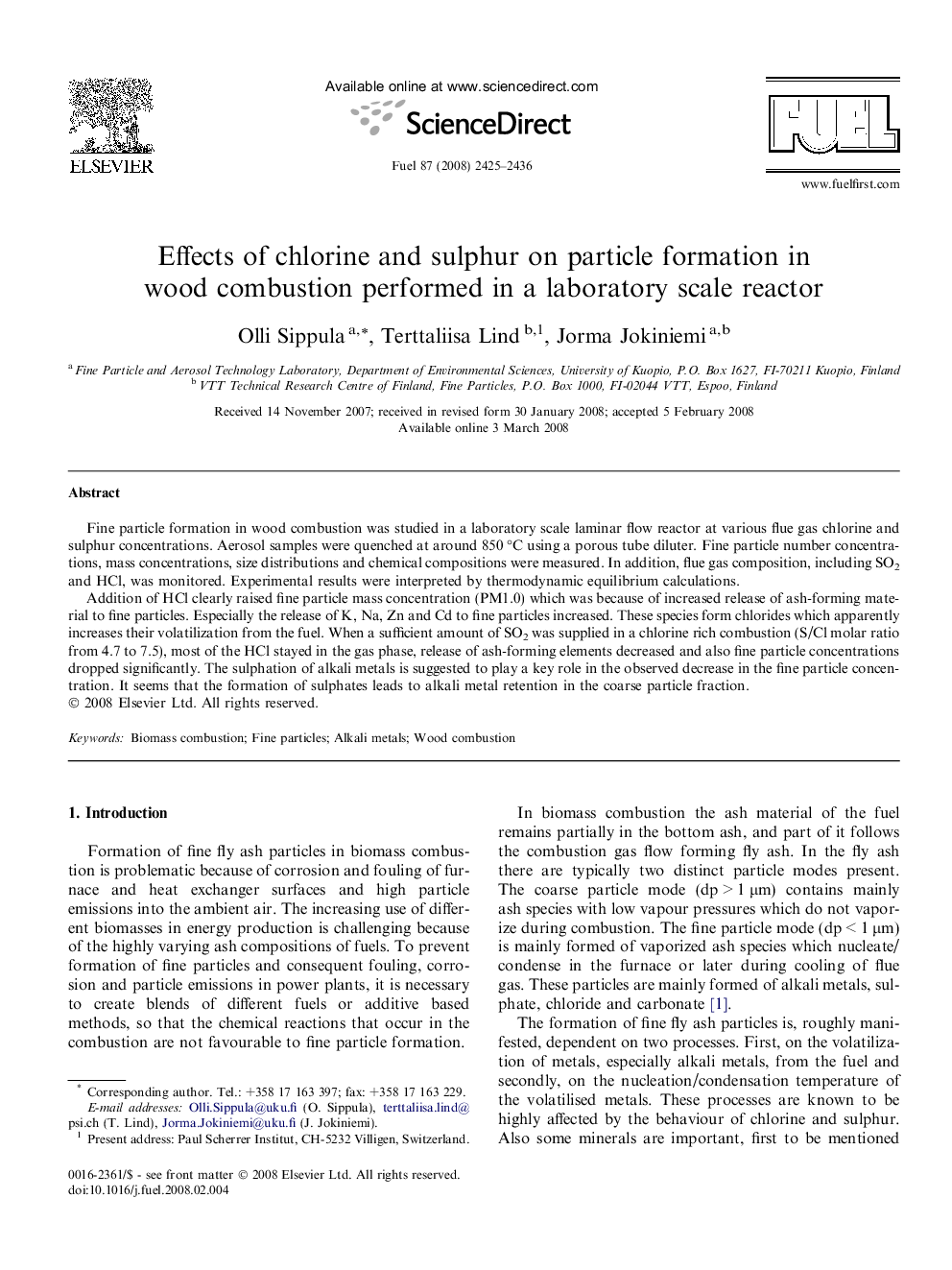| کد مقاله | کد نشریه | سال انتشار | مقاله انگلیسی | نسخه تمام متن |
|---|---|---|---|---|
| 207441 | 461217 | 2008 | 12 صفحه PDF | دانلود رایگان |

Fine particle formation in wood combustion was studied in a laboratory scale laminar flow reactor at various flue gas chlorine and sulphur concentrations. Aerosol samples were quenched at around 850 °C using a porous tube diluter. Fine particle number concentrations, mass concentrations, size distributions and chemical compositions were measured. In addition, flue gas composition, including SO2 and HCl, was monitored. Experimental results were interpreted by thermodynamic equilibrium calculations.Addition of HCl clearly raised fine particle mass concentration (PM1.0) which was because of increased release of ash-forming material to fine particles. Especially the release of K, Na, Zn and Cd to fine particles increased. These species form chlorides which apparently increases their volatilization from the fuel. When a sufficient amount of SO2 was supplied in a chlorine rich combustion (S/Cl molar ratio from 4.7 to 7.5), most of the HCl stayed in the gas phase, release of ash-forming elements decreased and also fine particle concentrations dropped significantly. The sulphation of alkali metals is suggested to play a key role in the observed decrease in the fine particle concentration. It seems that the formation of sulphates leads to alkali metal retention in the coarse particle fraction.
Journal: Fuel - Volume 87, Issue 12, September 2008, Pages 2425–2436